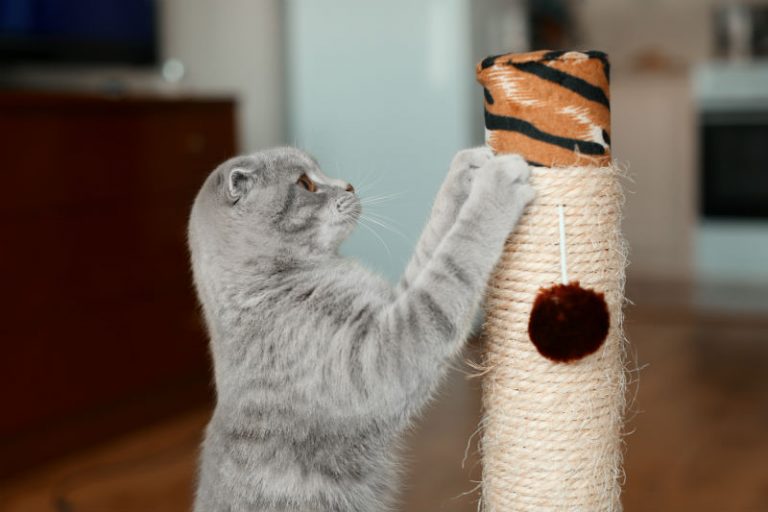More and more cats live strictly indoor lives these days, and one of the natural behaviours that cats bring indoors with them is scratching vertical surfaces. Scratching trees outdoors is usually not a concern but scratching furniture or door frames indoors can be problematic.
Cats scratch upright objects for claw maintenance by pulling off exterior layers of the nail and as a form of territorial marking. This type of marking provides both a visual and a pheromonal signal. During scratching behaviour, the pheromones are liberated on the surface of a vertical object by the footpads.
There are a number of ways to approach cat scratching. Frequent trimming of nails or the application of plastic caps “soft paws” can help to reduce the damage scratching does. Providing appropriate types of scratching posts, in appropriate locations can redirect scratching to more acceptable items. Offer several types of scratching posts to find what your cat prefers. Sisal-covered posts and upright fireplace logs are often good choices. Other options can include cardboard or carpet covered posts. Place the scratching posts in favourite locations, or directly in front of items that the cat has already chosen to scratch.
There are new feline behaviour products available that can help direct cats to specific items and away from others. “Feliway” is a feline pheromone product that can be sprayed directly on a surface daily to discourage scratching while at the same time a new product called “Feliscratch” can help to direct cats to specific areas to scratch. Feliscratch works in 3 ways, blue lines are applied vertically on the scratching post to mimic the visual message of scratch marks, catnip attracts cats to the post and pheromones deliver a scent message to the cat to scratch. Feliscratch can be used in combination with Feliway for cats who have well developed destructive habits in the home.
As Feliscratch is a relatively new product talk with your veterinary team to see how to get started and please provide your team of veterinary professionals with feedback so we can help more indoor cats and owners live together in a positive environment.
Written by: Chris MacDonald, DVM




